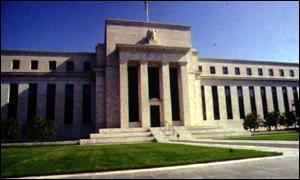
So what is 'hedging' and what are hedge funds, anyway?
'Hedging' as such is a good thing. It can protect companies and banks against unexpected developments, for example sudden falls or rises in the value of currencies or commodities.
The role of 'hedging' has taken on new importance in the last year as the Asian, Russian and Latin American crises has injected unprecedented volatility into world financial markets.
To hedge against such a risk, investment banks offer financial 'instruments', which can be very complex.
Future protection
Initially it was commodities like wheat or coffee which were the subject of futures trading.

The future of coffee - a financial instrument
|
Traders bought and sold 'future' contracts - an agreement to buy coffee, say, in three months time at a certain price - protecting themselves from the worry that a crop failure might drive up the price of coffee in the intervening months.
But in the 1980s, financial futures began to dominate trading. This involves buying and selling futures or options on shares, bonds or currencies.
For example, the main US stock market indices, the Dow Jones and the S&P 500, are traded as futures contracts, involving a guess as to where the averages will be in the future.
These instruments are called 'derivatives' because they derive from an underlying financial asset - in this case, share prices.
Options are the right to buy or sell these investment assets at a set price before a specified date in the future. The options themselves usually cost a fraction of the price of asset itself.
There are more complicated arrangements, which involve trading one type of asset for another, called 'swaps.' This might involving switching between both interest rates and currencies, trading a 10 year German bond for a 5 year Japanese one at a different interest rate, for example.
Profitable business
All these moves can be highly profitable, and many banks have found trading such derivatives on their own accounts very lucractive.
Some investment bankers have turned such hedging instruments into a business itself. To finance their operations, they seek investments from rich individuals and financial institutions.
These companies are called hedge funds, which is a misnomer as they do not provide any hedging at all.
Rather, they are the big players in the big money game. If you want to invest in a hedge fund, you will have to pay in at least a quarter of a million dollars.
Hedge funds like LTCM then make predictions on major market movements. They can move billions of dollars around the world overnight to 'take positions' in readiness for changes. These 'positions' are really just bets on the future.

John Meriwether, LTCM chief
|
LTCM specialised in spotting small differences in the price of government bonds, a process called 'arbitrage.' In the 1980s the founder of LTCM, John Meriwether, was one of the kings of arbitrage dealing.
At the same time they use complicated financial deals, derivatives, which allow them to take much larger financial positions than their funds would allow.
If the hedge fund experts guess right, they can make hundreds of millions of dollars profit. LTCM regularly delivered returns of more than 40% on invested capital.
This kind of hedging is not done for risk protection. Rather it is a game for rich market players gambling on picking future market direction in the hope of massive windfall gains.
George Soros, through his Quantum Fund, is another one of these players. He became famous when his fund 'bet' millions that the UK would be forced to devalue the pound in 1992. He won his bet, made lots of money and became notorious as the "man who broke the pound."
Hedging: an example
In the simplest example of a currency hedge, a Briton planning to move to Canada in six months taking £100,000 with her might want to 'insure' against currency movements.
With sterling so high and the Canadian dollar low, it may be wise for the traveller to take action now while the exchange rate is so favourable.
She might simply buy Canadian dollars now instead of waiting six months. That is one form of hedging.
|
George Soros, major hedge player
|
But it is unlikely she would be in a position to put all her funds now into the Canadian currency. Instead she might buy options over £100,000 worth of Canadian dollars which will cost far less.
The options bought would allow the traveller to buy the currency for a set price in six months time. If the currency rises, or the pound falls - she retains the right to buy at the more favourable rate by exercising her options.
If the opposite happens, she lets her options expire and loses what she paid for the option - that's the cost of her 'insurance policy'.
In buying now, protection against a worsening in the exchange rate has been bought - her funds have now been 'hedged' against future possibilities.
Small investors should not worry
If you are an average investor wondering why your retirement nest egg is not protected against risks with hedging, don't bother yourself too much.
Hedging is really only the preserve of large corporations, financial and investment institutions and a small number of very well-off individuals.
In many cases, the costs of hedging protection on investments ends up outweighing the benefits.
The closest most small investors come to hedging is buying units in some international share funds where the fund manager has taken out this form of insurance against share or currency market plunges.
What went wrong at LTCM
LTCM suffered losses of around $4bn from bad bets on global bond markets that got hit during the Russian financial crisis last month.
As investors moved their funds in a rush into more secure bonds, prices rose quickly and yields fell - a development largely unforeseen by LTCM and perhaps others.
Its capital, nearly $5bn at the start of the year, stood at $600m before the bailout, sources said.
Hedging investments are often made with a high degree of borrowed money, raising the risks of problems of things go wrong.
LTCM borrowed heavily for its fund investments. Now its investors are paying the price.